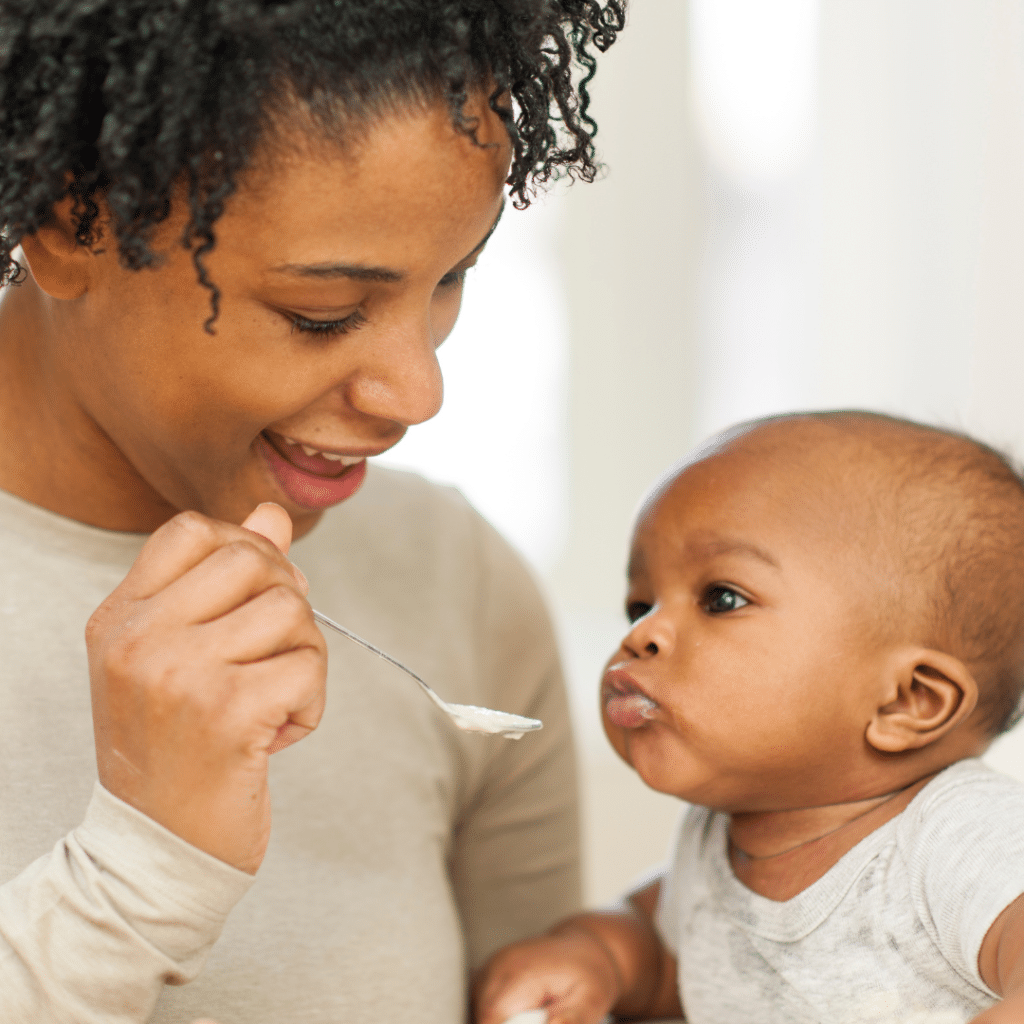
Weaning your baby is an exciting time but we’re asked about allergies more and more in our classes so this week, as it’s Allergy Awareness Week, we thought we’d talk all about the best way to introduce allergens to your baby’s diet.
Please note: if you have a history of severe food allergies, eczema, asthma or hay fever in your family please see advice from your GP or health visitor before introducing allergens to your baby.
What are the most common food allergens?
– cows’ milk
– eggs
– foods that contain gluten, including wheat, barley and rye
– nuts and peanuts
– seeds
– soya
– fish
– shellfish
Food should be introduced to your baby’s diet from 6 months old. Introducing allergens early and including them as a regular part of their diet can significantly reduce their chance of developing severe allergies.
Reassuringly, no life-threatening allergic reactions have been reported as a result of early introduction of allergens. [source allergyuk.org]
Introducing allergens to your baby’s diet
Always introduce new foods on a day when your baby is well. Introduce one new food at a time (one per day) so you can watch for signs of a reaction. We’d also recommend giving new foods in the morning or at lunch time rather than just before they go to bed for the night so you can keep an eye on them.
We’ve been asked in our classes if smearing food (such as peanut butter) on a baby’s skin can detect an allergy but the reality is that baby’s skin is very sensitive and may be irritated and go red if food is smeared onto it. Foods such as tomatoes and strawberries can irritate the skin and cause redness or a rash around the mouth, which doesn’t necessarily indicate an allergy to the food.
Know the signs
Signs of a food allergy can include:
– diarrhoea or vomiting
– itchy skin or rash
– swollen lips
– runny or blocked nose
– sore, red and itchy eyes
Make sure you’re aware of the signs of a severe allergic reaction. Read about how to spot a severe allergic reaction (anaphylaxis) on our recent blog here.
Download our free weaning meal planner here so you can record what allergens you’ve given your baby on what day.
